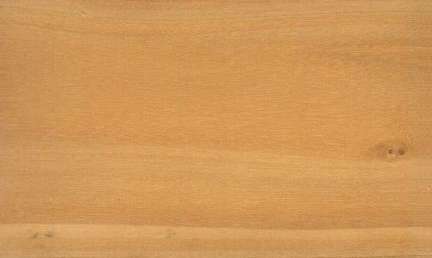
Bayabochi (Calycophyllum spruceanum)
Family: Rubiaceae
Common names: Bayabochi, Capirona, Capirona del bajo, Capirona negra, Corusicao, Guayabete, Guayabochi, Pau marfim, Pau mulato
Distributed in: Bolivia, Brazil, Colombia, Ecuador, Peru, Venezuela (Latin America)
Common uses: Boat building: decking, Flooring, Fuelwood, Furniture, Heavy construction, Light construction, Railroad ties, Textile equipment, Turnery, Vehicle parts
Environment profile: Vulnerable
Tree size: Trunk diameter is 150-200 cm
Colors: the heart isYellow, Yellow to golden-yellow to orangeand the sapwoodWhite to yellow, Yellow.The grain isStraight, the textureMediumand the lusterSlightly lustrous
Natural durability: Perishable, Susceptible to insect attack
Odor: Has an odor
Silica Content: High
Kiln Drying Rate: Very slow
Drying Defects: Ring Shakes, Splitting
Ease of Drying: Slowly
Tree Identification: Bole/stem form is straight
Comments: General finishing qualities are rated as good
Blunting Effect: Little
Boring: Fairly difficult to very difficult
Carving: Fairly Difficult to Very Difficult
Cutting Resistance: Fairly Difficult to Very Difficult to saw
Gluing: Fairly Easy to Very Easy
Mortising: Fairly Difficult to Very Difficult
Moulding: Very Good to Excellent
Movement in Service: Very Good to Excellent
Nailing: Fairly Easy to Very Easy, Very Good to Excellent
Planing: Fairly Easy to Very Easy
Resistance to Impregnation: Resistant sapwood
Response to hand tools: Responds Readily
Routing recessing: Fairly Difficult to Very Difficult
Sanding: Fairly Easy to Very Easy
Veneering qualities: Veneers easily, Veneers moderately easy
Steam bending: Unsuitable
Screwing: Fairly Easy to Very Easy, Very Good to Excellent Results; Turning: Fairly Difficult to Very Difficult
Painting: Fairly Easy to Very Easy; Polishing: Fair to Good; Staining: Very Good to Excellent; Varnishing: Very Good to Excellent;
- Numerical data Metric
- Numerical data English
- Strength properties
- References
 |
 |
 |
 |
| Item |
Green |
Dry |
Metric |
| Specific Gravity |
|
|
|
| Density |
|
817 |
kg/m3 |
| Bending Strength |
954 |
1473 |
kg/cm2 |
| Crushing Strength |
485 |
699 |
kg/cm2 |
| Hardness |
|
1192 |
kg |
| Impact Strength |
|
|
cm |
| Shearing Strength |
|
|
kg/cm2 |
| Stiffness |
152 |
175 |
1000 kg/cm2 |
| Tangential Shrinkage |
|
|
% |
| Radial Shrinkage |
4 |
|
% |
| Weight |
801 |
641 |
kg/m3 |
| Maximum Load |
|
|
cm-kg/cm3 |
| Toughness |
|
|
cm-kg |
| Static Bending |
|
|
kg/cm2 |
|
 |  |  |  | | Item | Green | Dry | English | | Bending Strength | 13576 | 20956 | psi | | Density | | 51 | lbs/ft3 | | Hardness | | 2628 | lbs | | Maximum Crushing Strength | 6899 | 9945 | psi | | Stiffness | 2167 | 2494 | 1000 psi | | Weight | 50 | 40 | lbs/ft3 | | Radial Shrinkage | 4 | | % | | Tangential Shrinkage | 8 | | % | |
Max. crushing strength = high
Bending strength (MOR) = high
Shrinkage, Radial = moderate
Density (dry weight) = 53-60 lbs/cu. ft.
Density (dry weight) = 46-52 lbs/cu. ft.
Shrinkage, Tangential = moderate
Shrinkage, Tangential = fairly large
Modulus of Elasticity (stiffness) = high
Hardness (side grain) = very hard
Hardness (side grain) = hard
Altamirano, S.V.,1992,Maderas de Bolivia (Caracteristicas y usos de 55 maderas tropicals,Camara Nacional ForestalDucke, A.,1943,The Most Important Woods of the Amazon Valley,Tropical Woods,12(74,pp1-15Erfurth, T., Rusche, H.,1976,The Marketing of Tropical Wood B. Wood Species from S. American Tropical,Moist Forests,F.A.O. Forestry DepartmentHighley, T.L., Scheffer, T.C.,1970,Natural Decay Resistance of 30 Peruvian Woods,U.S.A. Agriculture Department, Forest Service, Forest Products Laboratory,,Madison Research Paper,No.143Kukachka, B.F.,1970,Properties of Imported Tropical Woods,Forest Research Paper FPL 125Peru - P.A.D.T.,1981,Descripcion general y anatomica de 105 Maderas del Grupo Andino,Junta del Acuerdo de Cartagena, P.A.D.T. Report, Junac, Lima, Peru.U.S.D.A. Forest Service,1974,Wood Handbook,U.S.A. Department of Agriculture, Forest Service Handbook,72
|








